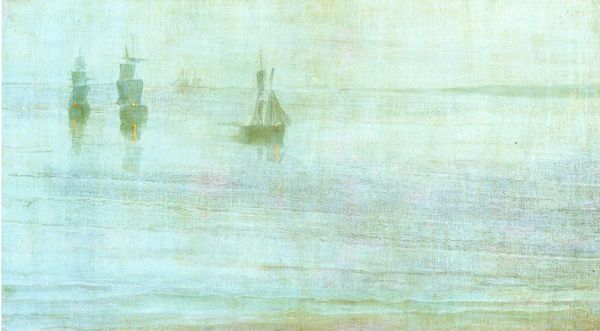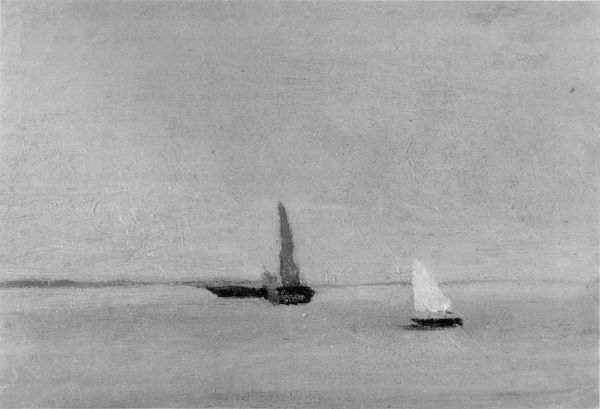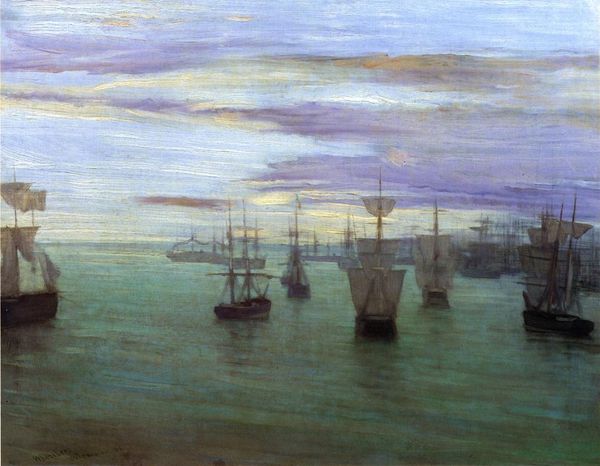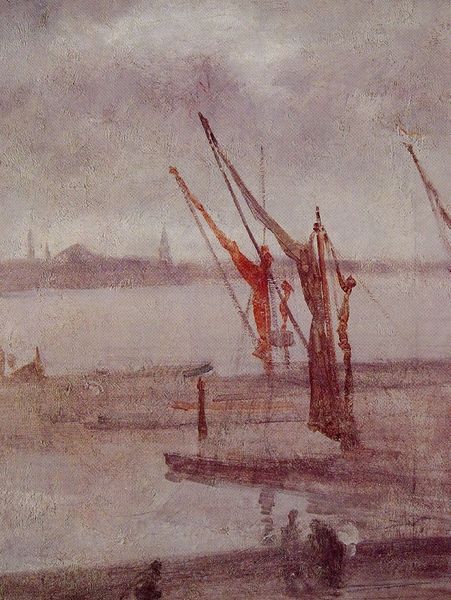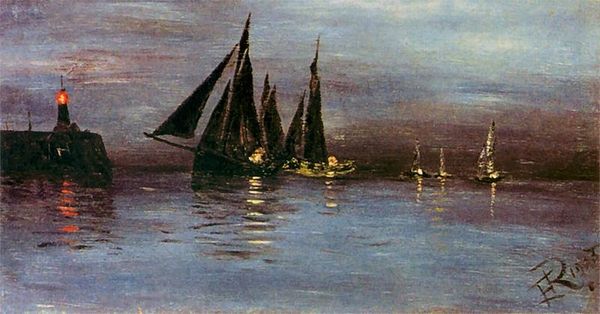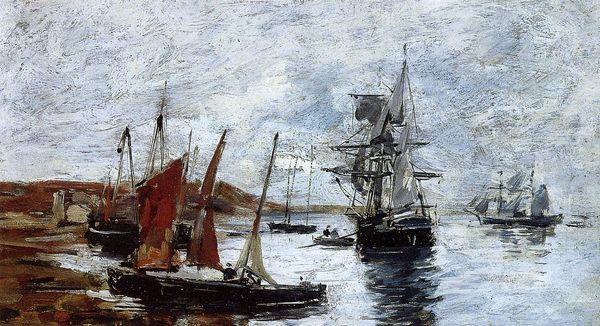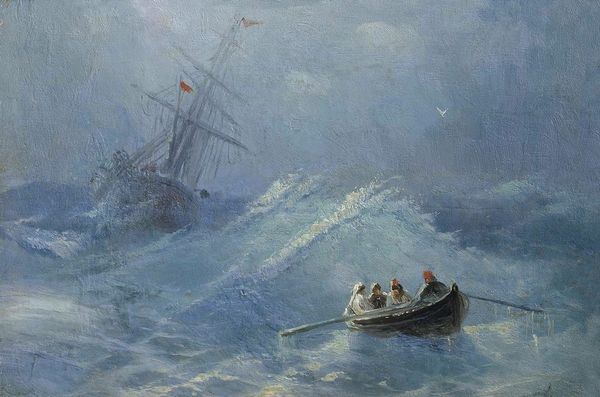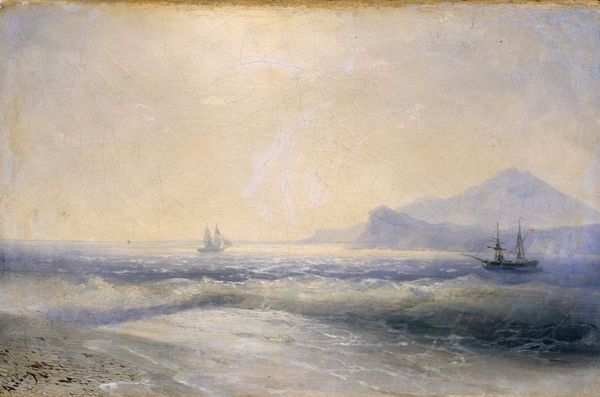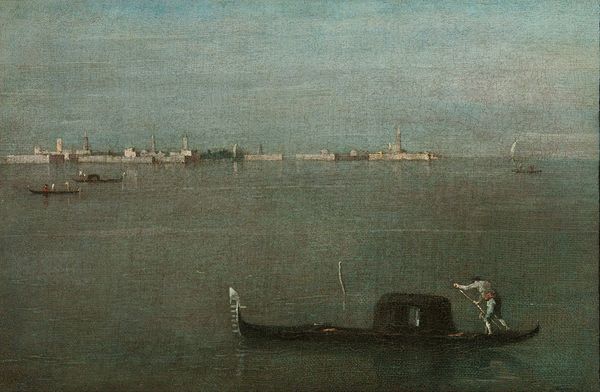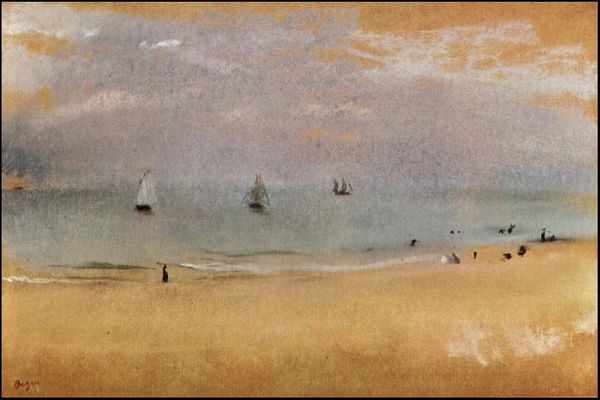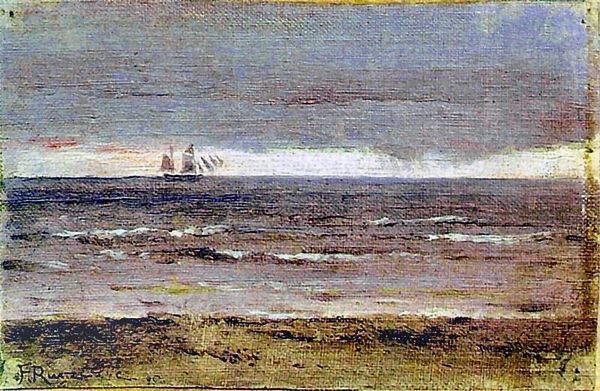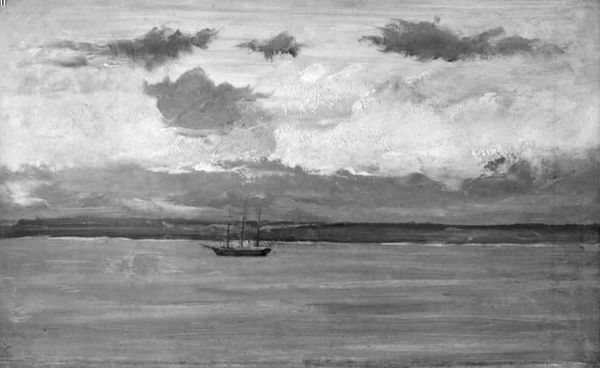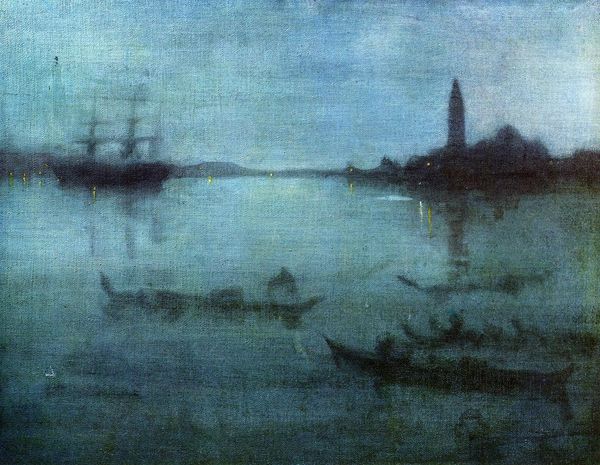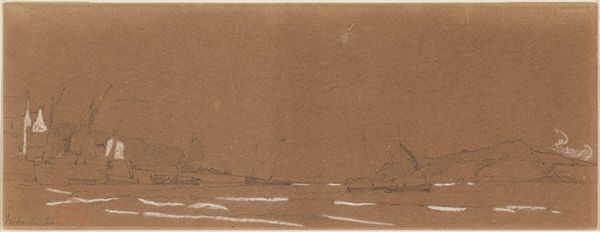
painting, oil-paint
#
boat
#
ship
#
painting
#
impressionism
#
oil-paint
#
landscape
#
impressionist landscape
#
oil painting
#
water
#
sea
Copyright: Public domain
Editor: Here we have William Merritt Chase’s “Sailboat at Anchor,” painted in 1881. The oil paint application gives the water such a fluid, almost shimmering quality. I am struck by the overall tranquility... what do you see when you look at this piece? Curator: Well, consider first the materials. Chase used oil paint, readily available due to industrial advances of the time. How does this impact artistic labor, versus, say, creating tempera from scratch? Also, what is being depicted here? It's not a heroic seafaring scene but an anchored boat, suggesting leisure and commerce. What class of people would have had access to such leisure? Editor: I see your point. The scene depicts leisure afforded by the means of production...so how might the painting's materiality relate to its subject? Curator: Exactly! Think about the availability of oil paints contributing to a new artistic culture, alongside the availability of sailboats for recreation amongst the wealthy. Chase's loose brushstrokes, so characteristic of Impressionism, almost obscure the labor involved in both painting *and* sailing. Are we meant to forget that labor? Editor: That's a fascinating idea. It’s as if the painting's very creation—the materiality of the paint and the application of it—mirrors the economic structures it depicts: masking labor and consumption. Curator: Precisely! And how does that understanding shift your perception of the "tranquility" you initially observed? Editor: It makes me think about what is intentionally left unseen. The scene isn’t just a pretty picture; it subtly reinforces certain social relations, all facilitated by available materials and their applications. Curator: A great insight! It’s always worth considering how readily-available materials contribute to artistic expression and shape our understanding of a work. Editor: Thanks, I’ll definitely look at art differently from now on. Thinking about art this way opens it up to new perspectives on labor and materials!
Comments
No comments
Be the first to comment and join the conversation on the ultimate creative platform.
